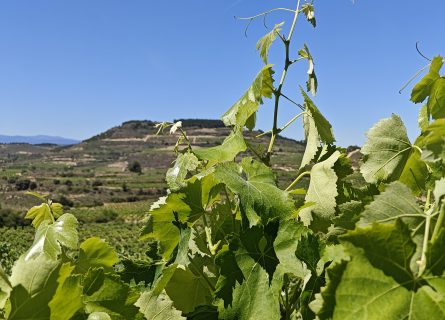
Sipping Sustainably: Exploring Organic Winemaking in Spain
August 5, 2024
Spain's wine industry excels in organic wine production, preserving terroir and ecosystems. Learn about organic winemaking, certifications, and top Spanish wineries.
By: Nicole Indovino / Last updated: November 28, 2024
Priorat, known for its dramatically steep slopes and unique Llicorella soils, is one of Spain’s most iconic wine regions. Located in the mountains southwest of Barcelona in the province of Tarragona, the wine region is one of two Denominaciónes de Origen Qualificadas (DOQ) in Spain alongside Rioja. The wines from Priorat are celebrated for their inky, intense flavors, which come from low-yield, rugged vineyards that produce impressive wines.
Discover More About Spanish Wine
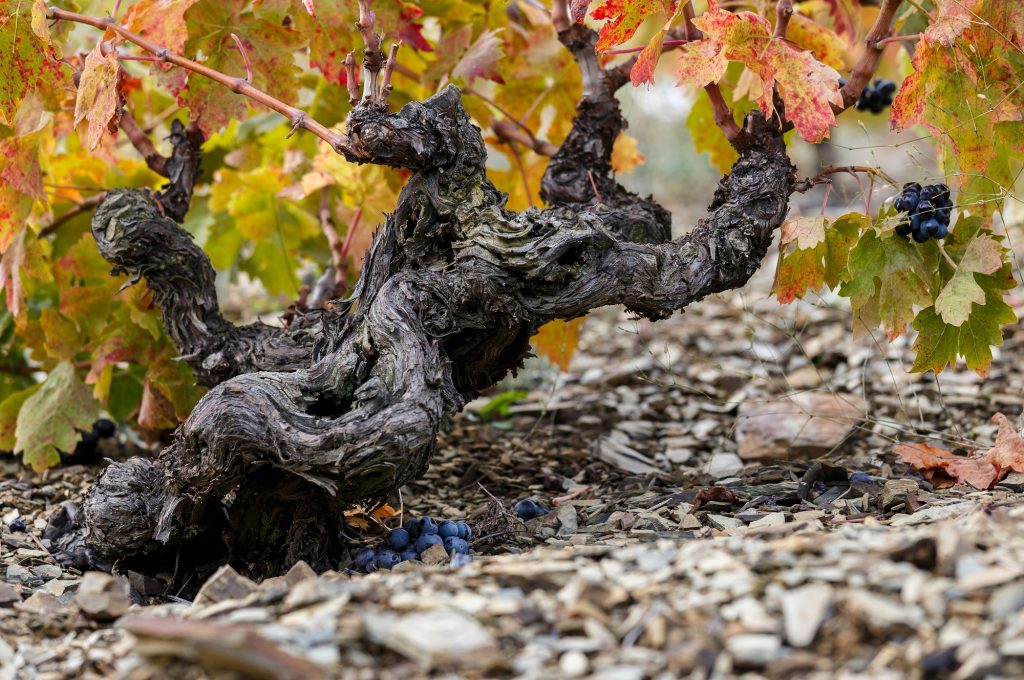
In 2020, the Priorat region adopted a new classification system, Els Noms de la Terra (The Names of the Land), focusing on terroir-driven winemaking and organizing wines based on small, distinct vineyard sites. This new system combines strict regulations with new modern tracking technologies and demonstrates how the Priorat continues to drive change as a pioneering force in the Spanish wine industry. In this article, we will dive into the history of Priorat and the new classification system to understand how it impacts the wines of today.
Winemaking in the Priorat dates back centuries and has a fascinating history deeply influenced by the Carthusian monastery Scala Dei. From the 12th century to the 1830s, the monastery ruled over an area of seven villages they called “the Priorat” and implemented unique viticulture techniques like terraced vineyards. However, in the mid-19th century, the combination of the Spanish government taking away the land from the Church and phylloxera devastating the region’s wine production led many to abandon the region.
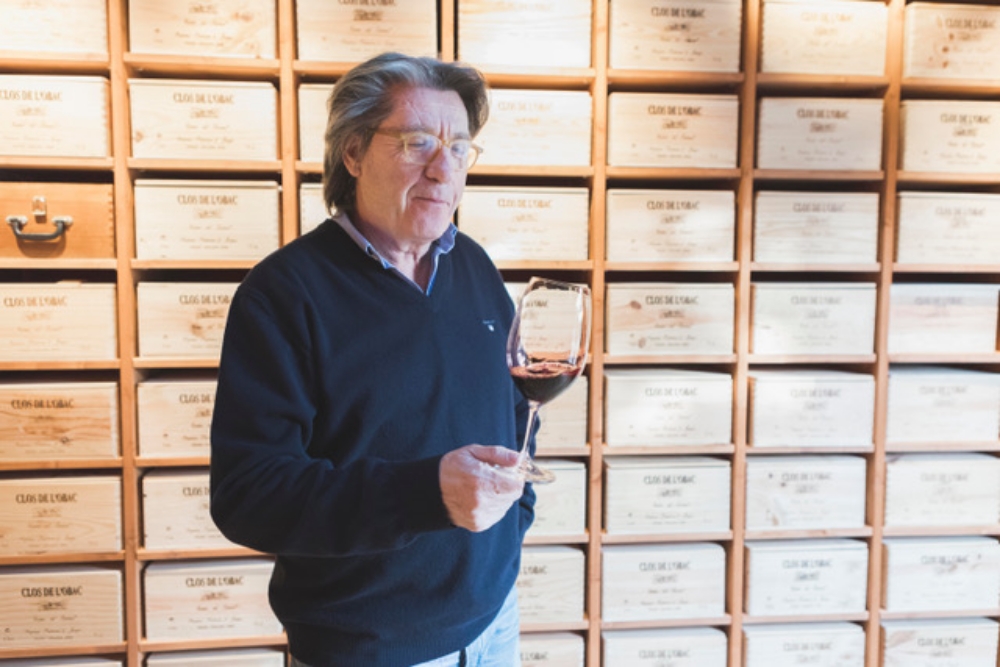
However, in the 1980s, the Priorat was revived by a group of young winemakers like Álvaro Palacios, Carlos Pastrana, and René Barbier, who were able to see the potential in the region’s old vine vineyards. These pioneering winemakers transformed the area into a world-class wine-producing region, garnering international attraction and fame. Today, Palacios continues to play a key role in shaping the region as a leading voice behind this new classification system.
The Priorat’s unique terroir and landscape give the wines their distinctive flavors. The region spans approximately 49,000 acres across 12 villages and is defined by its steep hillsides, often above 15% gradient, with some sites up to 60%. Due to the extreme steepness, the vineyards are terraced to make it easier to work amongst the vines. It also means many producers work with animals instead of machines, as tractors cannot enter the vineyards. Within this relatively small region, there are many microclimates. Some vineyards experience stronger winds than others, more shade, or intense sun exposure, contributing to the region’s desire to classify their wines based on local geography.
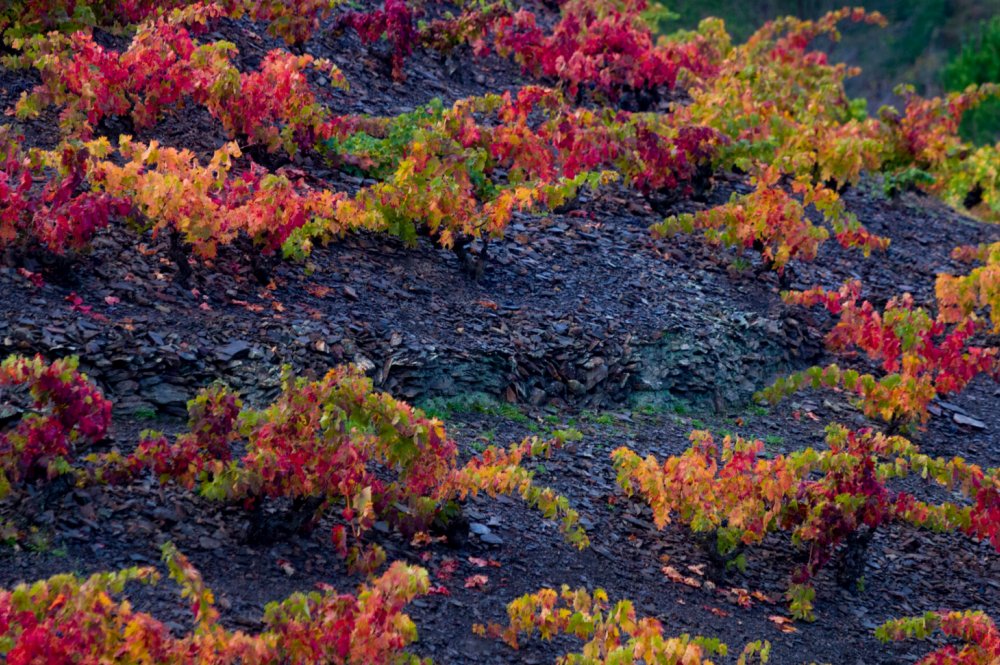
Another defining feature of the Priorat is the soil. Known as ‘Llicorella,’ it consists of deep brown and black slate mixed with limestone and mica. This “poor soil” forces the vines to grow deep roots to seek nutrients and water. This results in low-yielding vines that concentrate flavors in the fruit, and the slate characteristics enhance the wines’ minerality. During the hot summers, the soil reflects heat onto the vines, further ripening and concentrating flavors, while the cooler subsoils trap moisture, allowing the vines to thrive despite the heat.

The Priorat classification system, Els Noms de la Terra, was introduced in 2020. Unlike the Rioja classification system, which categorizes wines based on aging practices, this system is modeled after Burgundy’s classification system. It categorizes the wines in a pyramid-shaped ranking, highlighting the vineyards’ quality, age, and site terroir.
Within each category of this system, there are strict requirements based on varietal percentages, vineyard yields, age of vines, and vineyard ownership. Additionally, there are strict traceability requirements for some of the categories. The Consell Regulador DOQ Priorat has identified and outlined all vineyard sites in the area, allowing them to guarantee the origin of every grape, vineyard, and wine. They have also developed an app that winemakers must use to document each process step from vineyard to bottle. This allows for strict traceability and adherence to the classification system. Currently, more than 50 wineries are participating in Noms de la Terra. Here, we will break down the categories:
DOQ Priorat Regional Wine: At the pyramid’s base, we have the general DOQ Priorat Regional Wine, which grapes can be sourced throughout the greater Denominación de Origin. While this is a more general category, winemakers can innovate and create space for creativity.
Vi de Vila (Village Wine): This category has been established since 2007 and focuses on representing the specific characters of the villages in the region. For a wine to be Vi de Vila, the fruit must be sourced within the area of the particular village and from vineyards owned or leased by the producer for at least seven years. Additionally, the vines must be over 10 years old and have maximum yield requirements (7,000kg/ha for whites and 5,000kg/ha for reds). The red blends must have a minimum of 60% Garnacha or Cariñena.
Vi de Paratge (Single Site): This category, started in 2017, highlights wines from specific, highly defined vineyard sites. The boundaries of these single sites are determined by the governing body, the Consell Regulador, and once again, the wine producer must own or have a long-term (7+ years) lease of the vineyard. The vines must be 15 years or older, and there are stricter yield maximums (6,000kg/ha for whites, 4,000kg/ha for reds). Once again, the blend must include 60% or more of Garnacha or Cariñena.
Vinya Classificada (Premier Cru): The Vinya Classificada is based quite similar to Burgundy’s cru system in which the wines from these vineyards show outstanding quality and are some of the best representations of the Priorat region. The requirements for these wines are comparable to those for Paratge wines, which also originate from a single vineyard; however, in this case, 80% of the vineyard must be at least 20 years old, while the remaining 20% must be at least five years old. A strict traceability standard also requires the wine to be tracked (via an app developed by the Consell Regulador DOQ Priorat) through the complete production cycle—from the entry of grapes into the cellar, through racking, to the transfer of wine into barrels or other containers—ensuring that the entire process is traceable.
Gran Vinya Classificada (Grand Cru): The highest distinction possible for the region, the Gran Vinya Classificada wines are the ‘grand crus’ of the Priorat. A step above the Vinya Classificada, the wines must come from vineyards at least 35 years old and have a minimum of 90% Garnacha and/or Cariñena as the blend. Once again, strict traceability requirements trace the wine movement along the production process.
Currently, there are just a few wines with this status, including “L’Ermita” by Álvaro Palacios, “Mas de la Rosa” from Vall Llach, and “1902, Tossal d’en Bou” by Mas Doix.
Old Vine Certification: Vines 75 years or older or planted before 1945 are certified as “old vines” and can be used in all categories. Their authenticity is verified through historical and aerial photography, ensuring their premium status.
Key Grape Varieties: Priorat wines are primarily made from Garnacha (Grenache) and Cariñena (Carignan), two native red varieties that comprise more than 60% of the planted vineyards. These varietals make intense, concentrated wines with serious structure. Due to the climate and proximity to France, you will also find planted Merlot, Cabernet Sauvignon, and Syrah. Although less common, authorized white varieties such as Garnacha Blanca, Macabeo, Viognier, Pedro Ximenez, and Chenin Blanc are also planted in the region.
Discover more about Spanish Wine Grape Varieties
Innovative Use of Vineyard Sites: Another key feature of many Priorat wines is their commitment to highlighting unique vineyard sites’ microclimates. The Priorat has varied soil composition along different heights of their steeped hillsides in different valleys. Another distinguishing factor for vineyards is the wind; Priorat is subject to cold northern winds and the Garbinada, a Mediterranean sea breeze that helps temper the region’s hot summer temperatures.
While many prized vineyards around the world have south-facing slopes to maximize grape ripening, you will find some of Priorat’s most excellent wines coming from North-facing slopes, taking advantage of the wind and the shade to mitigate over-ripening and high levels of alcohol. For example, producer Jordi Vidal aims to highlight the north-facing slope and use of cool sea breezes in his wine Voltons, showing a fresher perspective of the Priorat but with the same bold energy.
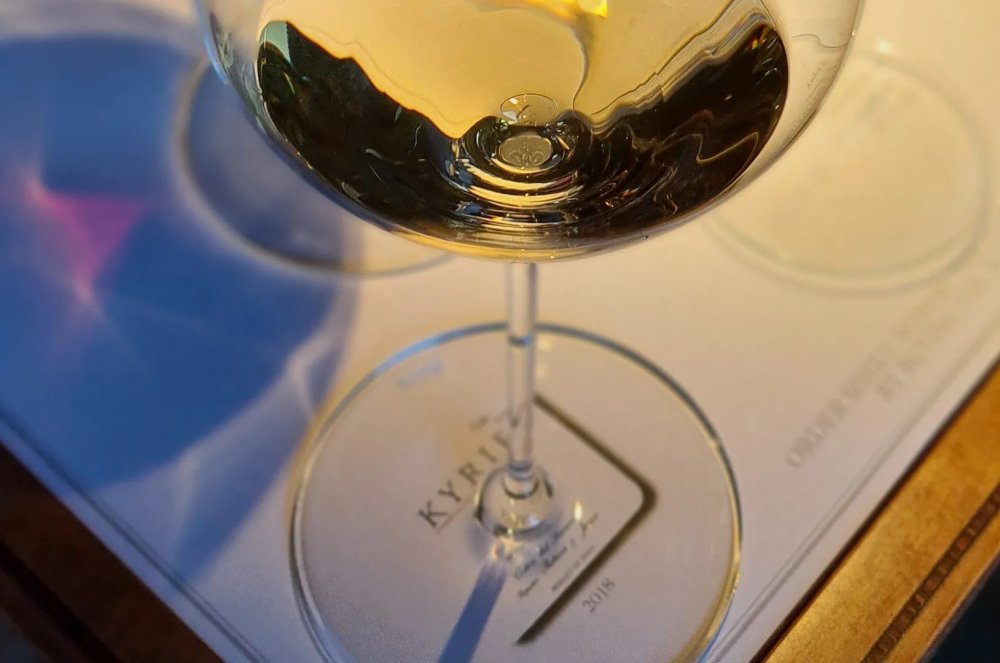
While white varietals only consist of about 7% of planted vineyards in the Priorat, there is a growing popularity for white wine from this region due to its exclusivity and the growing trend of preferring fresher wines. White wines from the Priorat often are full-bodied with a distinct minerality from the Llicorella soils and the intense heat of the summer. Blended varieties like Macabeo and Picpoul add nice freshness and balance to the wines. Try Salix by Mas Doix or Kyrie from Clos de l’Obac to get a refreshing new taste of the Priorat.
While many are thrilled about these new classification system changes, it comes with challenges. One of the more significant issues is the case of “shared names” between vineyards and registered commercial brands. For example, “Mas de la Rosa” is used by producer Vall Llach to name one of their top wines. However, now, it is one of the official vineyard plots recognized as part of Els Noms de la Terra, and the wine group Familia Torres, who owns the vineyard, produces their own “Mas de la Rosa,” which can be confusing.
The EU has ruled in favor of the place name over registered brands, so there is a system to follow. Like all new systems, it will also take time for the consumers to fully adapt and understand the nuances between these categories.
However, as iconic Priorat producer Daphne Glorian puts it:
“It might be complicated for the consumer… but it gives them an idea that Priorat isn’t a monolithic place that everyone thinks of, with one wine.“
Another interesting issue is the struggle for younger, independent producers to participate in these categories. The strict limitations for vineyard ownership, such as seven-year leases, are easier to accomplish with age and more capital.
Priorat’s classification system changes make us consider those of other Spanish regions. The new system is quite different and perhaps seen as a rejection of the Rioja and Ribera del Duero systems, which emphasize the aging of the wines.
However, the Bierzo region, in the Northwest of Spain, has a similar system of emphasizing the single vineyards and villages but with a key difference. In Bierzo, unlike the Priorat, no regulation requires producers to own their vineyards or have a long-term lease to qualify for a higher classification. The region allows vineyard growers to capitalize on selling high-quality grapes from their plots to local wineries.
Winemaker Ricardo Pérez (nephew of Alvaro Palacios) believes these vineyard growers will become inspired to produce their own wines someday. While the two regions’ systems are still quite similar, it shows how the areas adapt to their specific needs based on the local winemaking culture, economy, and more.
The implementation and acceptance of Els Noms de la Terra is an exciting new change for the region of Priorat and its dedication to highlighting the diversity and quality of their exemplary vineyards. It will be interesting to see how it shapes and affects the region over the upcoming years, influencing the wines and winemakers of the area. As the Priorat has been a leading influence in the Spanish wine industry, we are watching how this influences the rest of the country’s wine-producing regions.
If you would like us to customize an exclusive luxury tour, contact us and let us know your travel plans. We offer luxury food and wine tours for private groups of a minimum two guests. In addition, all of our private, chauffeured tours are available year-round upon request.

